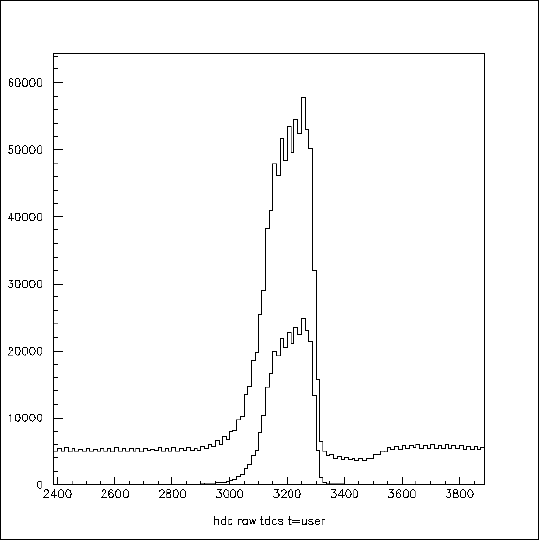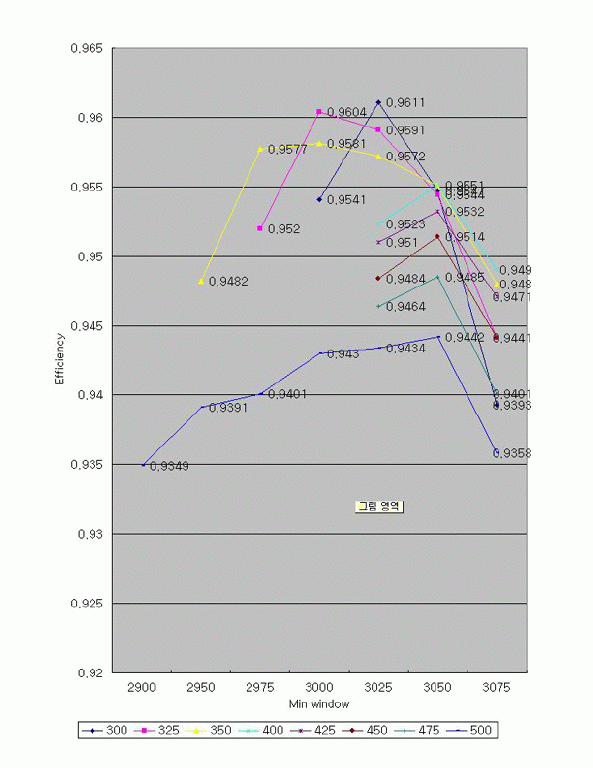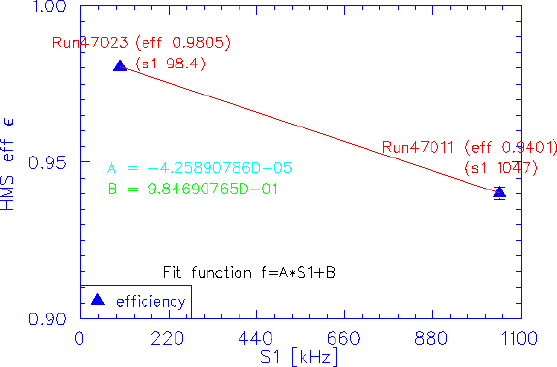 2. Overlay of raw and cut times
Shows that we're not cutting anything out, and we have left about 50 units (= 25 nsec)
of slop on each side to allow for extreme variations in drift velocity.
2. Overlay of raw and cut times
Shows that we're not cutting anything out, and we have left about 50 units (= 25 nsec)
of slop on each side to allow for extreme variations in drift velocity.
Aug 22, 2003, by Seonguk Jin and Dave Mack
Preliminary timing windows have been obtained using run 47011, a high rate run from the first luminosity scan early in the FpiII experiment. Most of the HMS tracks are electrons. Outstanding issues are whether these windows will work for the whole FpiII experiment (that still needs to be checked), why the efficiency at zero rate isn't a bit higher (do we have a parameter screwed up somewhere?), and implementing the software which ensures that the chosen track agrees with the detector hit information.
1. hdc.param File containing the time windows. We have chosen a 500 unit (= 250 nsec) wide window.
 2. Overlay of raw and cut times
Shows that we're not cutting anything out, and we have left about 50 units (= 25 nsec)
of slop on each side to allow for extreme variations in drift velocity.
2. Overlay of raw and cut times
Shows that we're not cutting anything out, and we have left about 50 units (= 25 nsec)
of slop on each side to allow for extreme variations in drift velocity.
 3. Efficiency vs window width and offset
Shows that our conservative window (blue, 500) does not give the highest efficiency for
this high rate run. A tighter window which loses a few percent of the good hits would
improve signal/noise at the cost of systematically losing events which pass near sense
or field wires. You can actually trace tracks from the focal plane back to the individual
chambers and see the missing strips! Presently that doesn't seem acceptable.
3. Efficiency vs window width and offset
Shows that our conservative window (blue, 500) does not give the highest efficiency for
this high rate run. A tighter window which loses a few percent of the good hits would
improve signal/noise at the cost of systematically losing events which pass near sense
or field wires. You can actually trace tracks from the focal plane back to the individual
chambers and see the missing strips! Presently that doesn't seem acceptable.
 4. Efficiency vs rate
Shows the rate dependence of the tracking efficiency. While the efficiency at
high S1 rates is excellent, the efficiency extrapolated to zero rate is only
about 98.5% which is 1% lower than we saw in FpiI in 1997.
4. Efficiency vs rate
Shows the rate dependence of the tracking efficiency. While the efficiency at
high S1 rates is excellent, the efficiency extrapolated to zero rate is only
about 98.5% which is 1% lower than we saw in FpiI in 1997.